





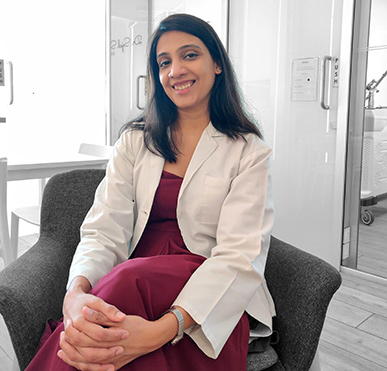
InUrSkn is more than just a skin a hair and body clinic. It is Dr. Sejal's promise of providing minimal intervention patient care which is holistic, personalized and humane.












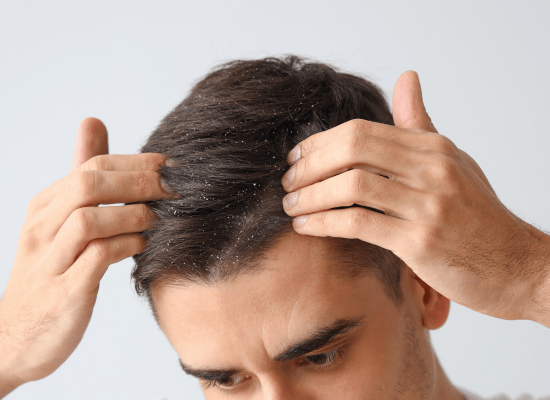
Rough and damaged hair primarily stems from dryness, contrary to the widespread belief that diet and direct nourishment are major contributors. In essence, environmental conditions and basic hair care, including practices like hair straightening and exposure to pollutants, significantly affect hair health. Although diet has minimal impact, a disciplined hair care regimen and professional guidance from a dermatologist are crucial in addressing these concerns, aiding in the restoration of smooth and healthy hair.
Read More
Dandruff, characterized by white flakes and itching, primarily affects the scalp but may also appear on eyelashes, eyebrows, and beside the nose. An overgrowth of skin cells causes these flakes, which may sometimes be sticky, leading to skin bleeding upon removal. Severe dandruff, known as seborrheic dermatitis, can be exacerbated by cold weather, infrequent scalp cleaning, or microbial growth. Effective treatments, prescribed by a dermatologist, include topical lotions, antifungal shampoos, or oral antifungals, alongside a tailored hair care routine.
Read More
Scalp boils and bumps, medically known as Folliculitis, manifest as red, painful, pus-filled lesions predominantly on the scalp, sometimes oozing pus or blood. They arise from various triggers such as bacterial or fungal infections, reactions to shaving, hair color, or oil massages. Treatment often entails oral antibiotics or antifungals, alongside topical antifungal applications, addressing the underlying causes and providing relief from this distressing condition.
Read More
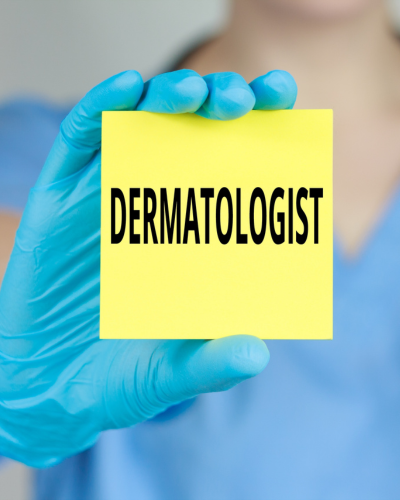
In addressing hair-related concerns, the decision between consulting a dermatologist or a trichologist can be pivotal. The distinction primarily hinges on the educational qualifications and recognition by authoritative medical bodies in India.
A dermatologist is a certified medical professional, whose title and qualifications are duly recognized by the Medical Council of India (MCI). To earn the title of a dermatologist, an individual must complete an extensive medical education (MBBS) followed by a specialized degree or diploma in dermatology. This rigorous training empowers dermatologists with a comprehensive understanding and the capability to treat a wide array of issues concerning the skin, hair, nails, and even sexually transmitted diseases (STDs).
On the flip side, the titles of cosmetologist or trichologist are not recognized by the MCI. Trichology is a domain focusing on hair and scalp issues, and to become a trichologist, one typically undergoes a program in hair care provided by private entities. However, this training is not as exhaustive as the medical training dermatologists receive. Moreover, it’s not regulated or recognized by the primary medical council, which could potentially lead to a gap in the quality and safety of the care provided.
Therefore, when dealing with hair concerns, a dermatologist, with their broader medical knowledge and recognition by established medical bodies, is decidedly more equipped to provide a diagnosis and treatment plan that is both safe and effective. This choice not only ensures that you are receiving care from a medically qualified individual but also broadens the scope of possible treatments for your hair and scalp issues.
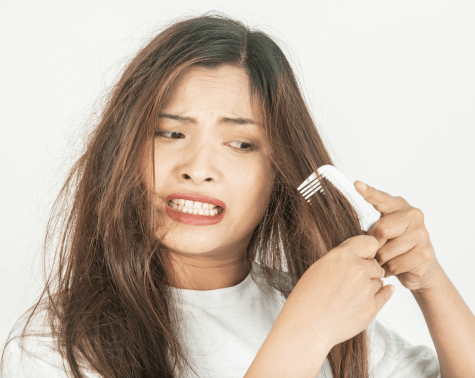
The primary reason why hair looks rough and damaged is its dryness. Contrary to popular belief, diet and direct hair nourishment has little to do with this damage that is visible. In reality environmental conditions and basic hair care play a major role in these cases.
Some of these conditions which cause the hair to become rough and damaged are listed below:
– Hair straightening
– Cysteine Therapy
– Smoking
– Exposure to environmental pollutants
A basic healthy hair care regimen including conditioning of the hair is the most important aspect of treatment. A good dermatologist will guide you in developing a hair care routine suitable to your specific hair.
Practices like hair straightening, cysteine therapy, smoking, and exposure to environmental pollutants contribute to rough and damaged hair.
Environmental exposure to pollutants, sun, and harsh weather conditions strip away natural oils, leading to dryness and damage.
Yes, a disciplined hair care regimen including regular conditioning and consulting with a dermatologist can help reverse damage to rough hair.
A dermatologist can provide personalized hair care routine recommendations and treatments to address the specific needs of your hair.
It’s advisable to limit hair straightening or use protective products to prevent further damage, and consult with a dermatologist for personalized advice.
Wearing hats, using gentle shampoos, and regular conditioning can help protect hair from environmental pollutants.
Yes, smoking restricts blood flow to the scalp, leading to hair dryness and damage over time.
Yes, cysteine therapy involves chemicals that can potentially dry out and damage hair if not done correctly or too frequently.
The frequency of professional treatments depends on the severity of hair damage and a dermatologist’s advice, but typically, treatments might be recommended every 4-6 weeks.
A balanced diet can promote overall hair health. However, addressing external care practices is crucial for treating rough and damaged hair.
Signs of damaged hair include split ends, extreme dryness, brittleness, hair thinning, and an increase in frizz and tangles.
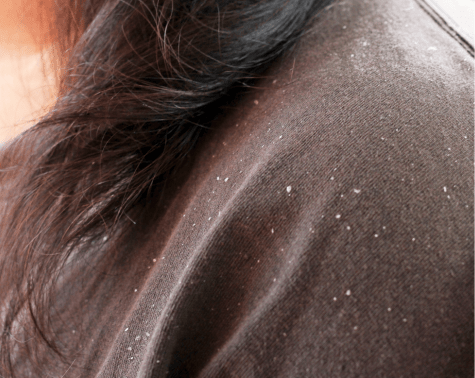
Dandruff is seen as small to large white flakes accompanied by itching. These can even be sticky flakes, which may cause the skin to bleed upon removal of flakes.
It is mainly seen on scalp, sometimes seen on eyelashes, eyebrows and side of nose. Severe form of dandruff is also called seborrheic dermatitis. The basic cause for the same is that there is a overgrowth of skin cells leading to flakes.
Aggravating factors of dandruff include:
Winter (cold dry weather)
Infrequently cleaning of scalp (shampooing)
Associated fungal or bacterial growth
Treatment includes topical lotions which take care of the flakes.
It is accompanied by anti fungal shampoos or oral antifungals.
A dermatologist will help you establish a good hair care routine that works for your hair.
A dermatologist examines the scalp and other affected areas, possibly performing a skin scrape test to check for fungal or bacterial growth.
Persistent scratching due to dandruff can cause mechanical hair loss. Also, if dandruff is caused by a fungal infection, it may lead to temporary hair loss.
Antifungal shampoos target and eliminate the fungal growth on the scalp that can contribute to dandruff and seborrheic dermatitis.
Yes, dandruff can reoccur, especially if scalp care routines are not maintained or if treatment is discontinued prematurely.
Stress may exacerbate dandruff or seborrheic dermatitis as it can impact the immune system, possibly leading to overgrowth of skin cells or fungal growth.
The frequency of shampooing varies among individuals, but a common recommendation is 2-3 times a week using a mild or anti-dandruff shampoo.
No, dandruff is not contagious as it results from individual scalp conditions and not from a transmissible pathogen.
The time frame varies, but noticeable improvements can often be seen within a few weeks of consistent treatment and proper scalp care.
A balanced diet may support overall skin and scalp health, but there is limited evidence linking diet changes directly to dandruff reduction.
Environmental factors like cold, dry weather can exacerbate dandruff by drying out the scalp, while humid climates might promote microbial growth leading to dandruff.
Yes, dandruff flakes can vary in size and can be dry or oily. Seborrheic dermatitis, a severe form of dandruff, tends to produce oily, yellowish flakes.
While there’s no permanent cure, dandruff can be effectively managed with the right treatment and a good scalp hygiene routine, minimizing its recurrence and impact.
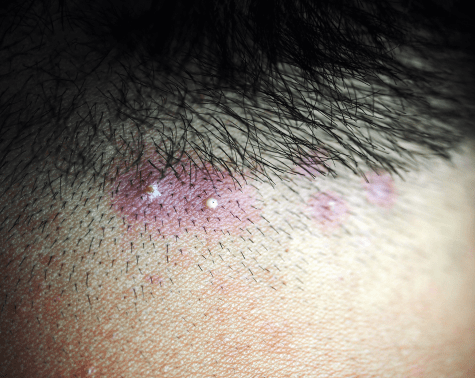
These are called Folliculitis. Colloquially these are also called Bal-Tod in Hindi or Heat Boils in English. This condition presents as red painful, pus filled boils. It dominantly occurs on the scalp. Also in this condition the boils ooze pus or blood.
Some of the main causes for this condition include:
– Bacterial infection
– Reaction to shaving
– Reaction to hair colour, oil massage etc.
– Fungal infection.
Treatments by for boils on scalp include:
– Oral Antibiotics
– Oral Antifungals
– Anti fungal shampoo
– Anti fungal creams.
The triggers can include bacterial or fungal infections, reactions to shaving, hair color, or oil massages.
Yes, bacterial Folliculitis can be contagious, hence maintaining good personal hygiene and avoiding shared personal items is advisable.
Diagnosis is primarily visual, but a dermatologist might conduct a skin culture test to identify the type of bacteria or fungus causing the infection.
While some OTC antiseptic shampoos or creams may provide temporary relief, it’s crucial to consult a dermatologist for a precise diagnosis and appropriate treatment.
Oral antibiotics are quite effective in treating bacterial Folliculitis but a full course is necessary to prevent recurrence.
Yes, maintaining a clean scalp, avoiding irritants like harsh hair products, and following a dermatologist’s treatment plan can help prevent recurrence.
No, self-draining can worsen the infection and even cause scarring. It’s advisable to seek professional medical help.
Folliculitis often presents as red, painful, pus-filled boils, whereas acne may not be as painful and might not have pus. A dermatologist can provide an accurate diagnosis.
Yes, severe or chronic Folliculitis can damage hair follicles, leading to temporary or even permanent hair loss.
While some may suggest home remedies, it’s crucial to consult a dermatologist to receive accurate diagnosis and effective treatment.

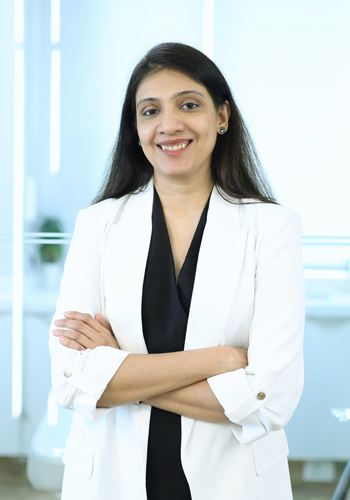
MD, DNB - Dermatology & Venereology
Dr. Sejal has dual degrees of MD and DNB in Dermatology and Venereology. She has worked with some of the senior most doctors in the largest government and private hospitals for more than 15 years. Over these years at InUrSKn, she has treated thousands of patients for a variety of conditions and needs across dermatology, venereology, cosmetology and trichology domains.
Dr. Sejal believes in a minimum intervention approach to health and believes that educating and empowering the patient is the key to good health.
Every patient at InUrSkn is seen personally by Dr. Sejal without any time limit, where she discusses the patient’s concern in detail along with understanding the history of their health and carrying out a personal examination.
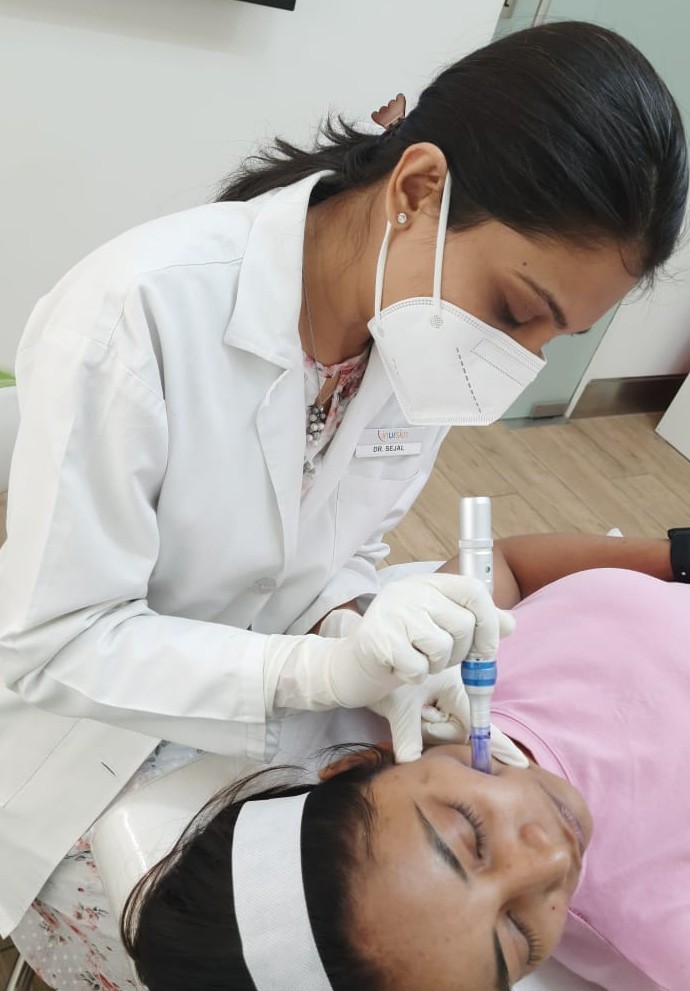
At InUrSkn, we believe that all patient care must be:
– Holistic
– Personalized
– Humane
– Minimal
Dr. Sejal and her team live by the philosophy of never prescribing medications or procedures that may not be required. When addressing a concern, Dr. Sejal ensures that a detailed history and context are thoroughly understood. Medical tests are prescribed by Dr. Sejal only when she believes there is more to the concern that needs to be addressed, ensuring the patient truly benefits.
Multiple spacious procedure rooms
Full-fledged operation theatre
In-house laboratory
Latest technology
100+ Skin, Hair & Body Procedures offered
Frequent disinfection of all clinic spaces with UVC light and WHO-approved chemicals
Large waiting and treatment areas to ensure social distancing
Regular health checks for all patients and staff
Safer than salons, chain-clinics & hospitals
PPEs for patients and staff
Personal attention from Dr. Sejal Saheta (MD, DNB) - with 15+ years of experience
CIDESCO-certified aestheticians with minimum 3 years work experience
500+ Positive Reviews on Practo and Google
5000+ Patients treated last year alone
8000+ Procedures completed
| Prices | ||
|---|---|---|
| Procedure | ||
| In Clinic Consultation with Dr. Sejal | ||
| In Clinic Consultation with Dr. Sejal | ₹1100 | |
| Online Consultation with Dr. Sejal | ||
| Online Consultation with Dr. Sejal | ₹900 | |
Pricing (Inclusive of taxes)


Some common myths include dandruff being a result of poor hygiene, being contagious, or being cured by sunlight exposure. However, dandruff often results from individual scalp conditions, is not contagious, and sunlight exposure might only provide temporary relief but not a cure.
It’s advisable to consult a dermatologist if dandruff is persistent, severe, or if over-the-counter treatments don’t provide relief. A dermatologist can provide a precise diagnosis and a tailored treatment plan.
Yes, some hair coloring products contain harsh chemicals that can irritate the scalp, potentially leading to dandruff or other scalp conditions.
Yes, children can develop dandruff, although it’s less common compared to adults. It’s advisable to consult a pediatric dermatologist for appropriate treatment.
Yes, hormonal fluctuations, especially during puberty or pregnancy, can potentially trigger dandruff or other scalp conditions due to changes in sebum production.
While some find relief with home remedies, they may not work for everyone and could potentially irritate the scalp further. It’s advisable to consult a dermatologist before trying home remedies, especially for persistent or severe dandruff.
Dry scalp and dandruff may have similar symptoms like flaking and itching. However, dandruff is often accompanied by an oily scalp and larger, greasy flakes, while dry scalp involves smaller, dry flakes and may be caused by environmental factors like cold, dry air.
Anti-dandruff shampoos often contain ingredients like pyrithione zinc, selenium sulfide, or ketoconazole that help control the overgrowth of fungi or yeast on the scalp, reduce inflammation, and remove excess skin cells.
Yes, in some cases, dandruff or seborrheic dermatitis can extend to the forehead causing a rash, redness, or flaking, known as “dandruff rash”.
Yes, an oily scalp can create a conducive environment for the yeast Malassezia, which can exacerbate dandruff.
Applying hair oil can sometimes worsen dandruff, especially if the scalp is left unwashed for long periods. It’s advisable to consult a dermatologist for personalized advice.
Yes, allergies to certain hair care products or environmental allergens can cause scalp irritation, itching, or other scalp conditions.
A humid climate can create a conducive environment for microbial growth on the scalp, potentially leading to dandruff, fungal infections, or other scalp issues.
Yes, certain medications can cause scalp issues as a side effect, including dandruff, scalp irritation, or hair loss. It’s advisable to consult with a healthcare provider if you suspect your medication is affecting your scalp health.
Yes, wearing hats or helmets for extended periods can trap sweat and oil on the scalp, potentially leading to dandruff, folliculitis, or other scalp conditions. It’s advisable to keep headwear clean and avoid wearing them for extended periods when possible.


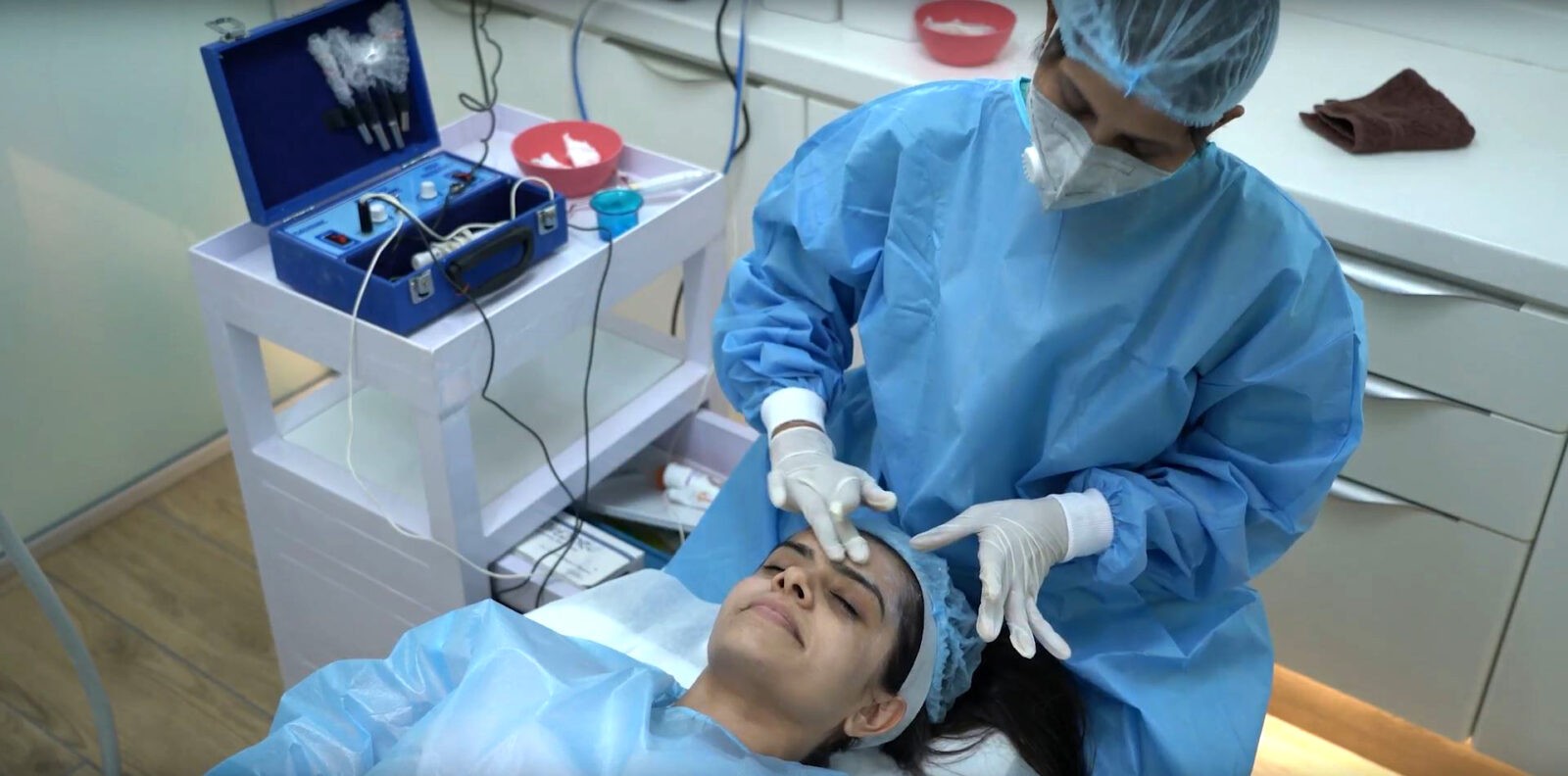
Ready to book an appointment?
BOOK
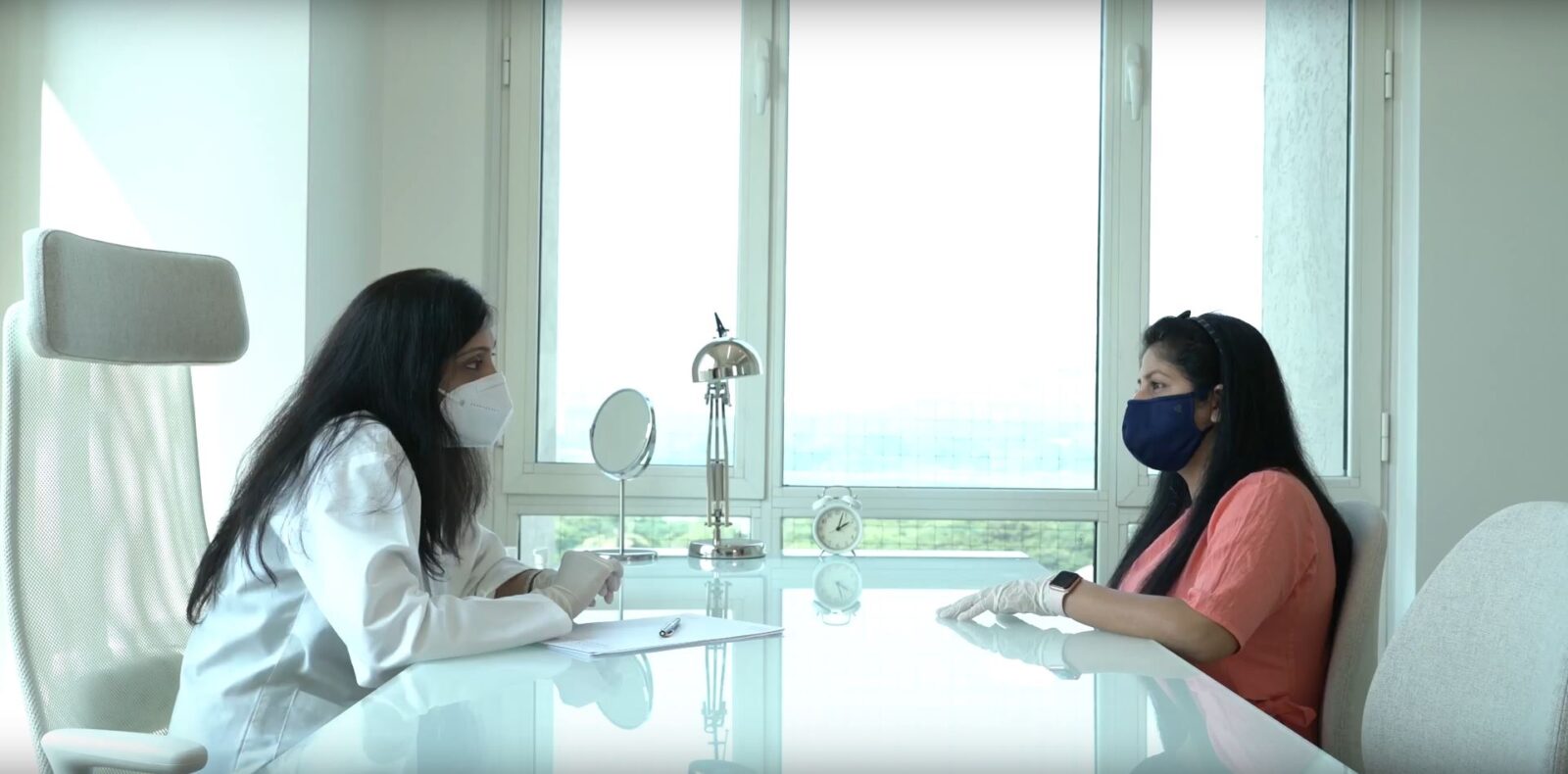
Want to talk about your needs ?
MAKE AN enquiry
